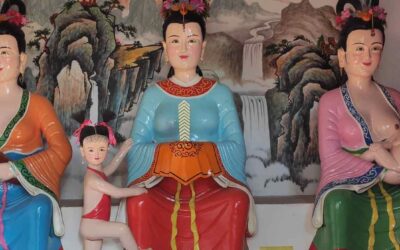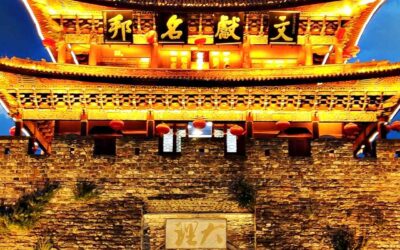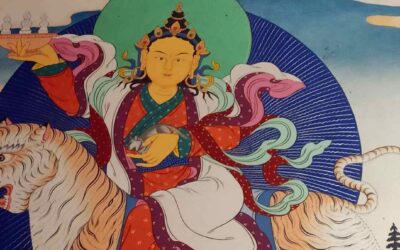How to prepare green tea to enjoy all its health benefits
All people related to China have a vague idea that tea is good, our friends tell us so, sometimes an article appears in a newspaper or magazine, or the public relations of the tea houses or plantations that are occasionally visited by tourists repeat it to us, but the truth is that I had rarely come across a study as interesting as the one I am commenting on here.
In an article that appeared in Food Research International in 2010, Drazenka Komes and her team[1] investigated the influence of tea preparation, different extraction conditions and storage time on the preservation of its bioactive components and antioxidant capacity. For those who do not want to read too much, the results of this research suggest that the extraction efficiency of the bioactive compounds of green tea reaches maximum efficiency during aqueous extraction at 80ºc, for 5 minutes for powdered tea (matcha type), 15 minutes (tea-bags Lipton) and 30 minutes (loose leaf tea).
The authors state that “all green teas exhibited significant antioxidant capacity in vitro, which was in correlation with their phenolic content, confirming that green tea is one of the best dietary sources of antioxidants” (page 167).
The health benefits of tea are believed to come from the polyphenols it contains, which are chemical compounds with antioxidant properties. These polyphenols include flavanols, flavandiols and phenolic acids, and constitute up to 30% of the dry weight. The most important flavonoids are catechins, which are present in 10% of the dry weight. “These native phenolic compounds are strong antioxidants with antimutagenic, anticarcinogenic, hypocholesterolemic, antibacterial, antiallergic and other clinically relevant activities. Kao, Hiipakka, and Liao (2000) found that among green tea polyphenols especially (—)-epigallocatechin gallate (EGCG) significantly reduced food intake, body weight, blood levels of testosterone, estradiol, leptin, insulin, insulin-like growth factor I, LH, glucose, cholesterol and triglyceride, as well as growth of the prostate, uterus and ovary. (167).
Green tea also contains methylxanthines: caffeine, theobromine and theophylline, which are responsible for its mildly stimulating effects, and have beneficial health effects. Caffeine improves mental activity, running performance, and is used to treat apnea and migraines, and theophylline and theobromine have been used in the treatment of asthma and bradycardia. Besides phenolic compounds and methylxanthines, tea provides a significant dietary source of polysaccharides, vitamin B complex, vitamin C, vitamin E, R-aminobutyric acid, fluoride, as well as minerals and trace elements such as K, Mn, Cr, Ni and Zn (168).
The main objectives of the present study were: (A) to determine the effect of different extraction conditions (temperature of water, extraction time and multiple extraction) on the content of phenolic compounds and methylxanthines in different green teas; (B) to determine the antioxidant capacity of green teas depending on extraction conditions and storage time of prepared infusion; and (C) to compare the content of studied bioactive compounds in loose leaf, bagged and powdered green teas.
These researchers studied the effect of different extraction conditions (tea shape, water temperature, extraction time and multiple extractions) and the storage time of the prepared infusions on the content of phenolic compounds and methylxanthines of green teas and their antioxidant capacity. It is important to emphasize that all the teas analyzed are a rich source of phenolic compounds, the content of which depends on the extraction conditions. The highest TPC (Total Phenolic Content) and TFC (Total Favoniod Content) were detected in bagged Twinings green tea (2,560 and 1,920 mg/L GAE, respectively) and Matcha green tea powder.
Among the teas tested, bagged green tea was recognized as the richest source of phenolic compounds (TPC and TFC), which reached their maximum values when water heated to 100 °C was used for extraction. The results obtained confirmed that water at higher temperature extracted higher TPC and TFC. Although the first extract of green teas is usually discarded due to excessive astringency, it is concluded that the practice of reusing tea samples is not a good way to drink, as most of the health-enhancing compounds (flavonoids) are broken down. And compared to the first extraction, the second and third extractions of the three forms of green tea at 80 °C yielded significantly lower TPC and TFC.
The obtained results suggest that higher water temperature and short extraction time, as well as lower water temperature and longer extraction time are the best combination for the extraction of bioactive compounds from green tea, allowing the best extraction efficiency. According to some previous studies, catechin content is time and/or temperature dependent, with the best results in catechin extraction achieved at 90 °C for 80 min.
The addition of milk showed a diverse impact on the antioxidant capacity of tea and may decrease the antioxidant potential of black tea preparations. The antioxidant capacity of the three forms of green tea increased with the addition of lemon juice, which is directly attributed to the synergistic effect of ascorbic acid on the polyphenols present in the tea extract.
The results of this investigation suggest that the antioxidant capacity of all teas tested was correlated with the total phenol content, depending on the extraction conditions.
[1] Drazenka Komes, Dunja Horzic, Ana Belscak, Karin KOvanevic Ganic, e Ivana Vulié. Green tea preparation and its influence on the content of bioactive compounds. Food Research International 43 (2010) 167-176
Cite this article as: Ceinos-Arcones, Pedro, «The first description of the Religion of the Yi,» in Ethnic China, 21 marzo 2021, https://ethnic-china.com/the-first-description-of-the-religion-of-the-yi/.
Last posts
Sexual aspects of Gu venom
Gu illness resulted from a contamination by gu poison, which a recent analyst has characterized as “an alien evil spirit which entered [the] body and developed into worms or some similar animal that gnawed away at the intestines or genitalia.” This poison was thought...
Sunset in Dali
No Words Fuxing Rd from the South Gate. Dali, Yunnan.Corner in Fuxing Rd, Dali, Yunnan.Night market at the south of the South Gate. Dali. YunnanLast posts
The five secret temples of the lamas in Lijiang
The five secret temples of the lamas in Lijiang Religions of Lijiang Although the city of Lijiang is known primarily for the Dongba religion practiced by the traditional shamans of the Naxi, also called Dongba, who with their rituals administered the religious and...
The Local Lords cult of the Bai nationality
The worship of the Local Lords (benzhu) is the most characteristic of the Bai people. Their religious life revolves around the Benzhu temple of each village, as each village venerates a local lord, sometimes a historical figure who sacrificed for the people. In other...
The tiger hero of the Naxi
The tiger hero of the Naxi[1] A long time ago, a man named Gaoqu Gaobo lived in the Baoshan area. He had a strong body, lively intelligence, and certain magical powers. He was always willing to help people. One day he went on a trip with a group of villagers. After a...
Wonderful- yaks most precious treasure is their manure
Wonderful- yaks most precious treasure is their manure Most of the travelers who visited Tibet in former times noticed the importance that, for the maintenance of the living of the Tibetan nomads and travellers, had the Yak manure, known among the...









